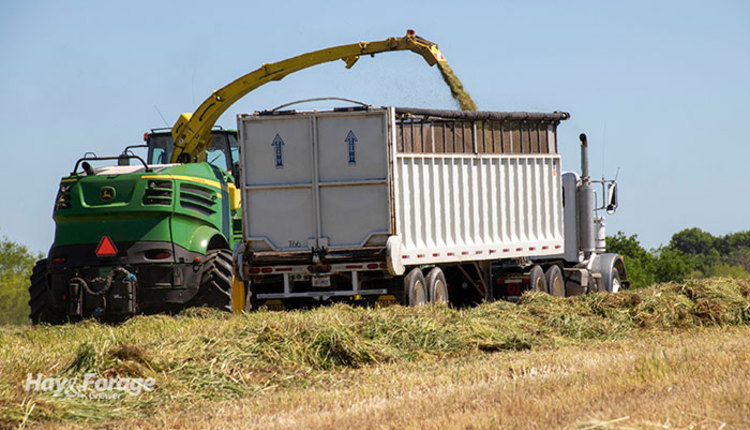
Although they’re still sometimes referred to as “alternative forages,” winter cereals have reached mainstream status on many dairy and beef operations. Farmers have found that winter rye, winter triticale, and winter wheat fit perfectly into livestock-based crop rotations and provide excellent yields of high-quality forage if harvested at the correct stage of maturity and moisture.
There are numerous reasons why winter cereals have gained favor among producers. Many are in search of a feed that doesn't offer quite the nutritional punch of corn silage or alfalfa. Others cite winter cereals’ consistency in terms of yield and quality, often feeding it as a significant component of the milking cow ration.
Whatever the utilization, winter cereals offer many land conservation and soil quality attributes. They also provide an additional manure-spreading outlet in late spring.
With more winter cereals being harvested for forage, it has become clear that two mistakes are made more than any others: harvesting too late and harvesting too wet. These two factors are unrelated.
Too late
It’s common that winter cereals get harvested later than desired. This occurs for several reasons. First is simply that once cereals hit the boot stage, maturity to reproductive (heading) stages progresses rapidly. With this rapid progression comes an equally fast decline in forage quality. It’s not uncommon to see winter rye, for example, go from milking cow to heifer quality in a matter of days.
The rapid decline in quality aligns with a time when there are usually other field operations that require attention; for example, corn planting or herbicide applications. A cereal field nearing the boot stage needs to be monitored closely.
Finally, and this one is purely observational, it seems that the optimum time to cut winter cereals in the spring often coincides with a week of wet weather. The choice then becomes one of delayed cutting or risk having the crop rained on while it wilts.
For high-quality dairy feed, the optimum harvest stage for cereals is mid- to late boot. This is when the flag leaf has emerged and unfolded but before seedheads are visible. The window to hit this stage is small.
Ohio State University Extension specialists recommend that neutral detergent fiber (NDF) values be less than 55% for cereal forages being fed to dairy cows or beef stockers. As is the case with most forage species, if temperatures are cool, optimum forage quality will be maintained longer than if temperatures are warm to hot.
Delaying harvest past the boot stage will dramatically boost forage yields, but quality will suffer. In some cases, this may be acceptable if heifers or beef cows will utilize the feed.
Too wet
The consequences of a late harvest are costly, but those of a cereal forage crop that is harvested too wet may be even more expensive.
Wet cereal forages, above 65% moisture, are low in water-soluble carbohydrates and are notorious for creating a clostridial fermentation. This can occur whether the crop is chopped or harvested as baleage.
Clostridial bacteria are responsible for producing the toxin that causes botulism. Although rare, it is a realistic worst-case scenario for cereal forages harvested too wet.
A clostridial fermentation is easy to diagnose with fermentation analysis done by a reputable laboratory. Generally, clostridial fermentations are characterized by higher levels of acetic, propionic, and butyric acids. The silage will also have higher ammonia concentrations. Often, but not always, the silage pH will be higher than normal.
Clostridial silages are usually unpalatable to livestock. The silage will have a pungent, unpleasant odor. As a result, dry matter intake will be depressed.
Why is clostridial fermentation so prevalent with cereal forages?
By nature, winter cereals are cut early and are slow to wilt to an acceptable harvest moisture. For this reason, it’s important to spread the forage out as wide as possible when cutting. This puts more of the wilting crop in contact with the sun, enhancing the dry-down rate.
Even with a wide swath, further swath manipulation with a tedder may be needed to speed up drying. This is especially true if swath widths are less than 80% of cut width. Minimizing time from cutting to chopping or making baleage helps preserve forage quality.
Cereal forages can provide excellent forage yields and desired forage quality for all livestock classes. However, to ensure the end product is as desired, special attention needs to be given to both harvest timing and moisture.

